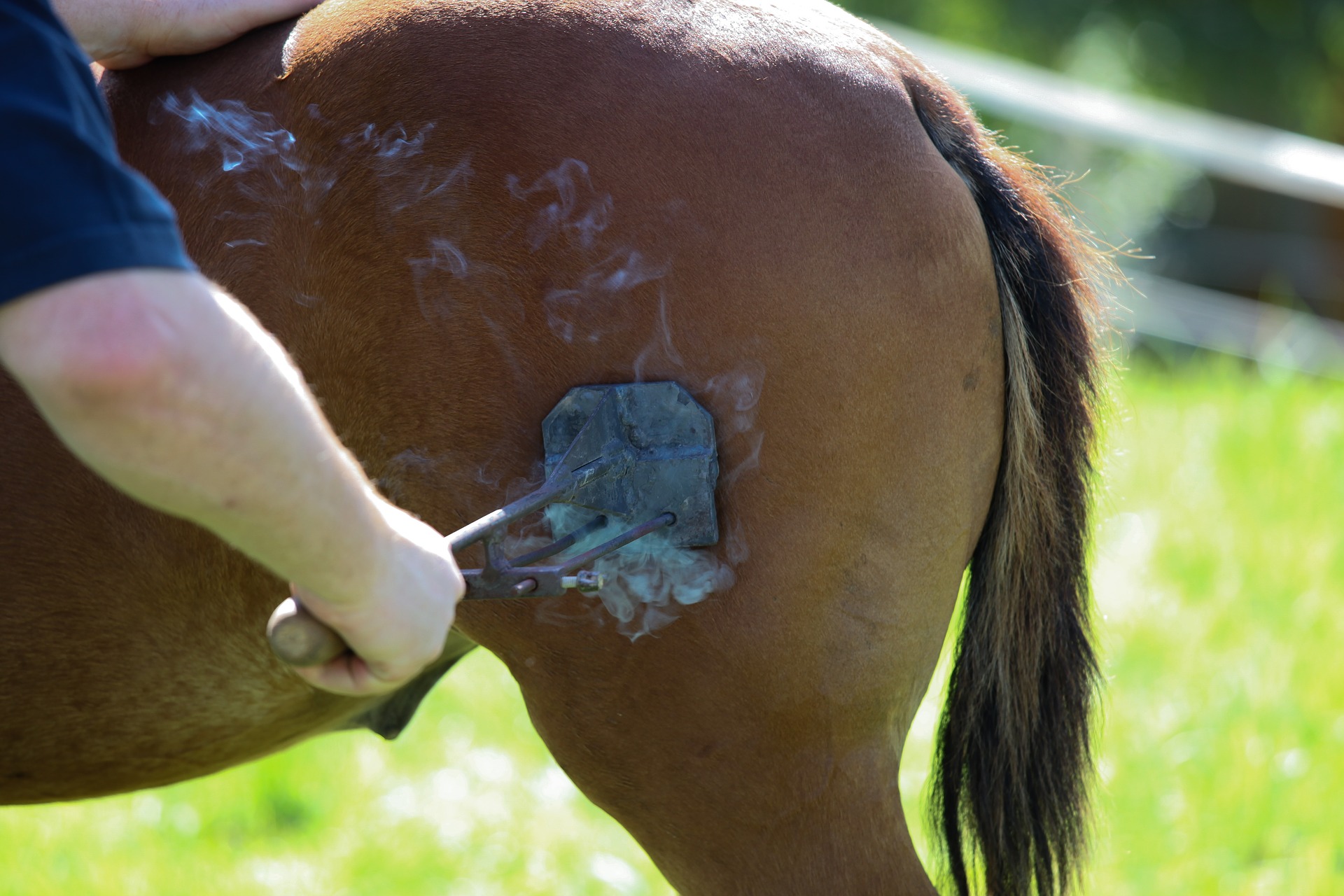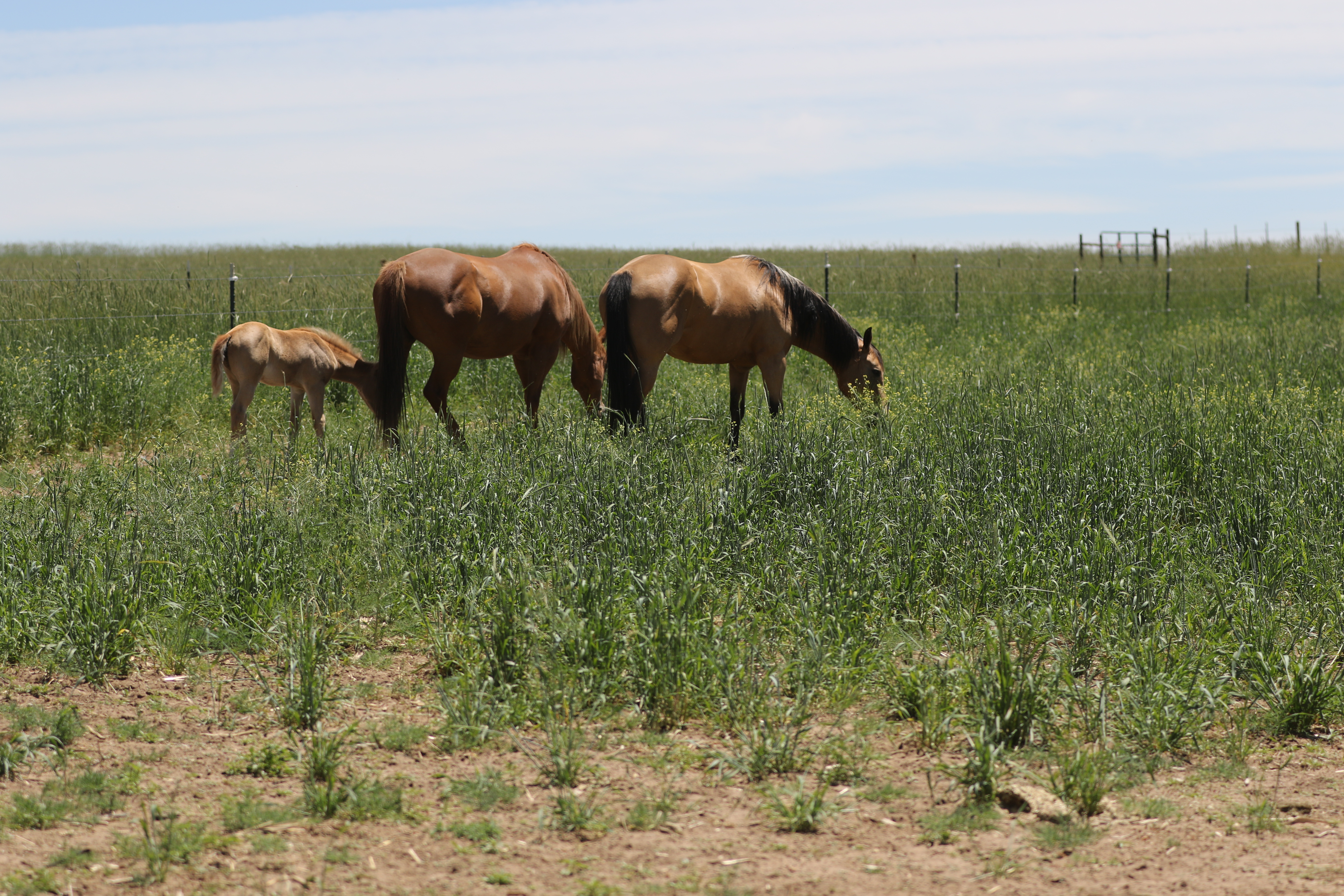Losing a horse to thieves is one of the most gut-wrenching experiences you can have. To safeguard against it—and to be best prepared to recover your horse in case the worst happens—follow these tips.
[READ: Chips & Brands Horse Theft Deterrents]

1. Brand or otherwise permanently mark all your horses. Thieves are more likely to pass by horse with an identifying mark of some sort. Plus, if your marked horse is ever stolen, he’ll be much easier to track and recover.
Options include freeze branding, hot-iron branding, and lip tattooing. An implanted microchip, though not necessarily a deterrent (because it can’t be seen), can still be an aid to recovering a stolen horse.
Be sure to record brands or marks with the county clerk’s office in the county where the horses live; register a microchip with a national registry.
2. Create an identification/proof-of-ownership file containing essential information on your horses and keep it in a secure place. It should include:
- Photos of both sides of each horse, with no distractions–including people–in the image. (For security reasons, in that these photos would be used on fliers if a horse were stolen, you especially don’t want yourself or any member of your family in the pictures.) Also take front and rear shots, headshots, and close-ups of any unique or identifying characteristics–such as a brand, scar, whorl or white marking.
- Registration papers, if the horse has them.
- Dated bill of sale and/or breed association transfer-of-ownership paperwork.
- Written descriptions of any brands or identifying marks and any other unique characteristics. (Also be sure to record each horse’s brand or mark with the county clerk’s office in the county where the horse lives.)
- Health records, including any Coggins test results.
[READ: Why Horse Identification is Important]
3. Secure your horses’ living space. Install a perimeter fence around your barn and/or pens to render them less accessible from the nearest road. Use only well-built gates that can be locked (keeping a mind toward fire safety).
Making the access to your horses more difficult can be a significant deterrent, as thieves predictably seek targets of easy opportunity. (In planning a horse enclosure, locate it beyond your house if possible, away from the road.)
4. Care for pastured horses in a way to deter theft.
- Keep pasture gates locked (again, with a mind to fire safety).
- Never leave horses’ halters on (this is a safety hazard as well as a significant aid to thieves looking to work quickly).
- Don’t feed your horses close to the pasture gate or near the road. Though convenient for you, this practice is also convenient for thieves, as it encourages horses to hang out where they would be easiest to nab.
- Check on your pastured horses regularly, varying the time of your trips to avoid predictability.

5. Don’t leave halters and lead ropes on stall fronts, pen or pasture gates, or anywhere in the open where they might help thieves make a quick catch. Ideally, keep halters in a locked tack or feed room.
6. Install motion-sensor lights to illuminate the areas where you keep your horses at night (making sure they won’t interfere with any lighting programs you might be using to influence broodmares’ heat cycles or show horses’ coats). Also consider purchasing monitors or alarm systems.
7. Establish a horse owners’ watch program in your area to provide added surveillance of everyone’s animals. (This is especially useful to enable members to check on each other’s horses when owners are out of town.)
8. Display signs and warning posters where appropriate to signal to potential thieves that the owner is informed and actively protecting stock. Examples include:
- “No trespassing” signs
- Security-system signs;
- Farm or livestock association membership signs;
- Horse owners’ “watch” signs.
9. Ask local law enforcement and regional brand-inspection officials for other security tips that might be warranted in your particular area. Inform officials of any suspicious activities.
[READ: How To Prevent Trailer Theft]
10. Be on guard at shows or other public-venue events. With the drop in the salvage value of horses, some thieves are stealing not for the animal’s slaughterhouse value but for its competitive ability for resale. Check with the event’s management to learn what security measures may be in force, and then add additional measures (such as extra supervision of your horse) as need be.
NOTE: Thanks to Pete Gibbs and Dennis Sigler, respectively the past and current extension horse specialists at Texas AgriLife Extension Service, for assistance with this article.






